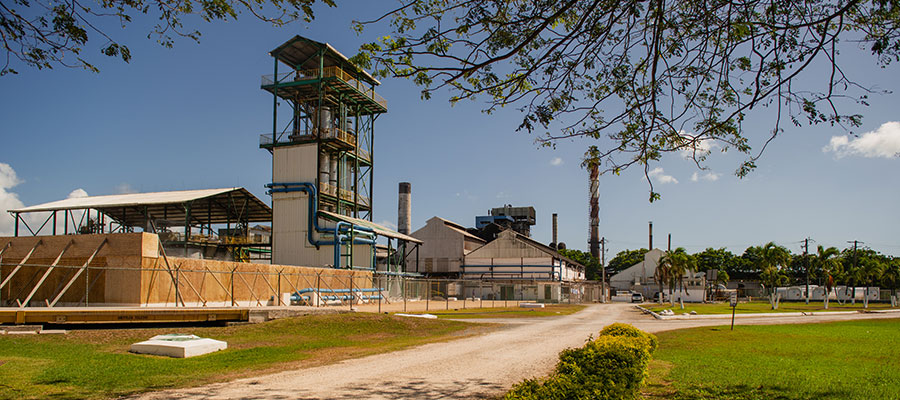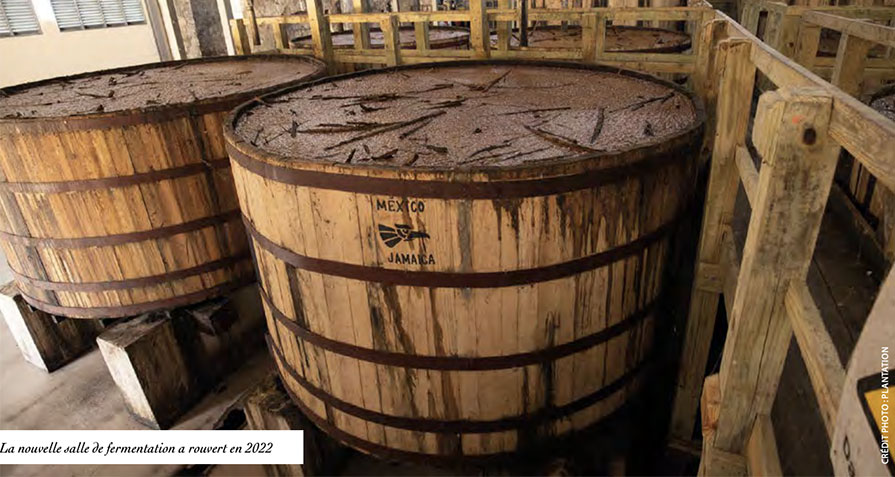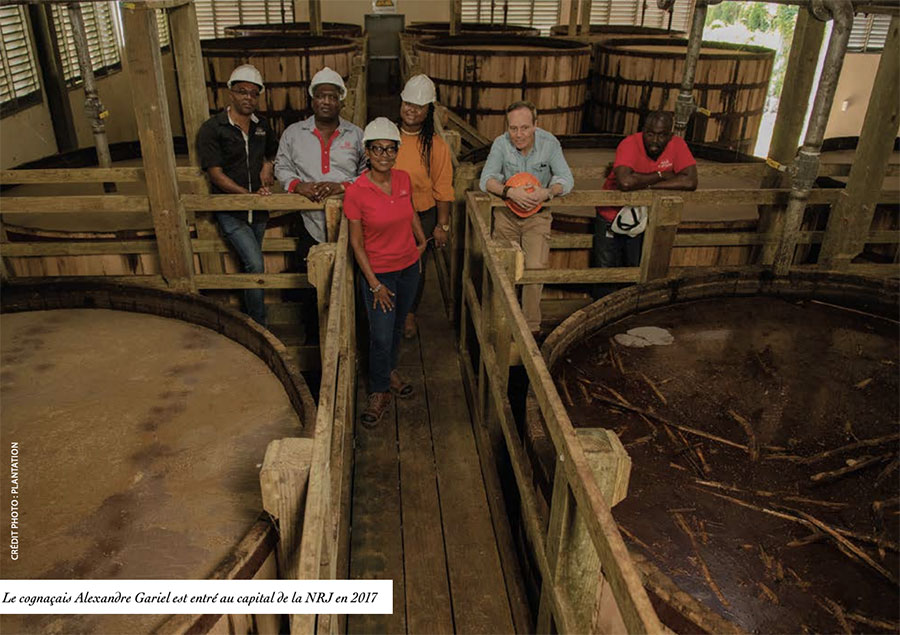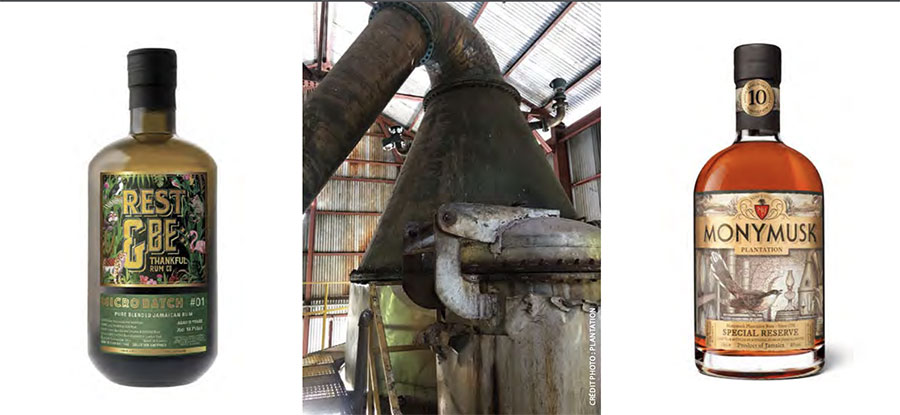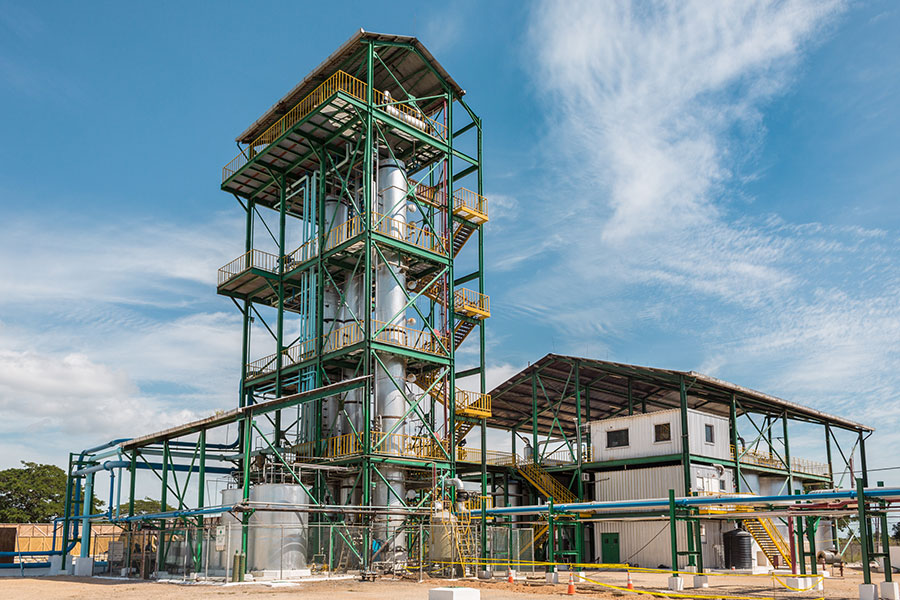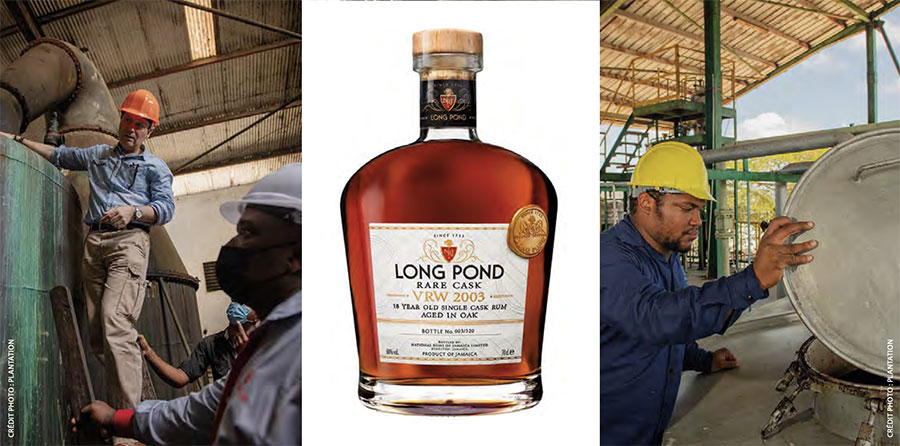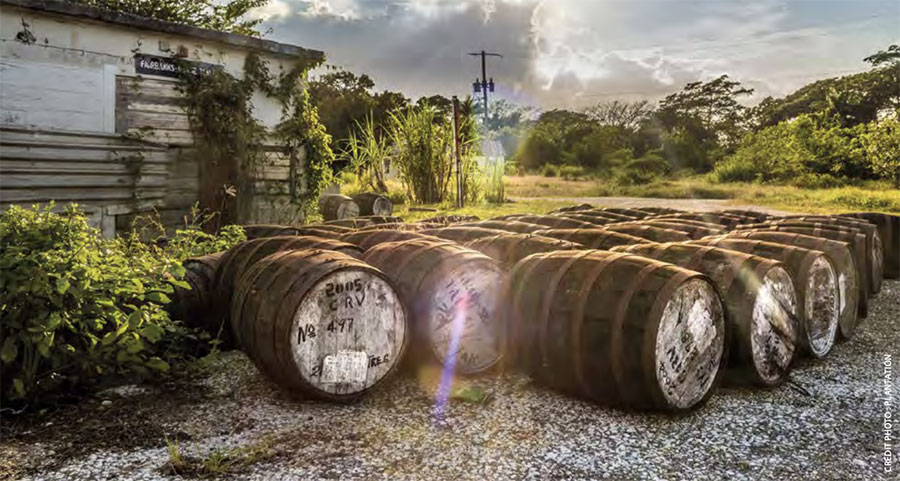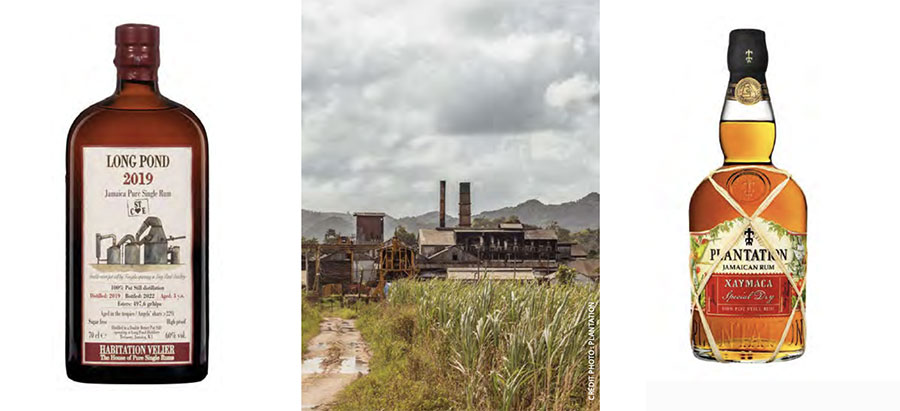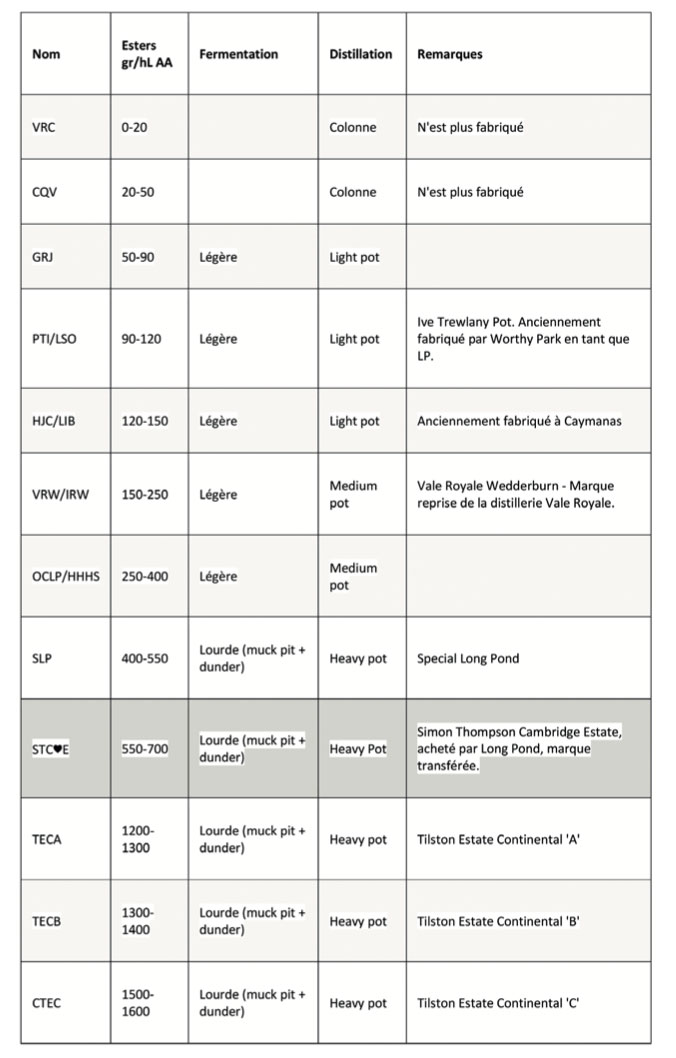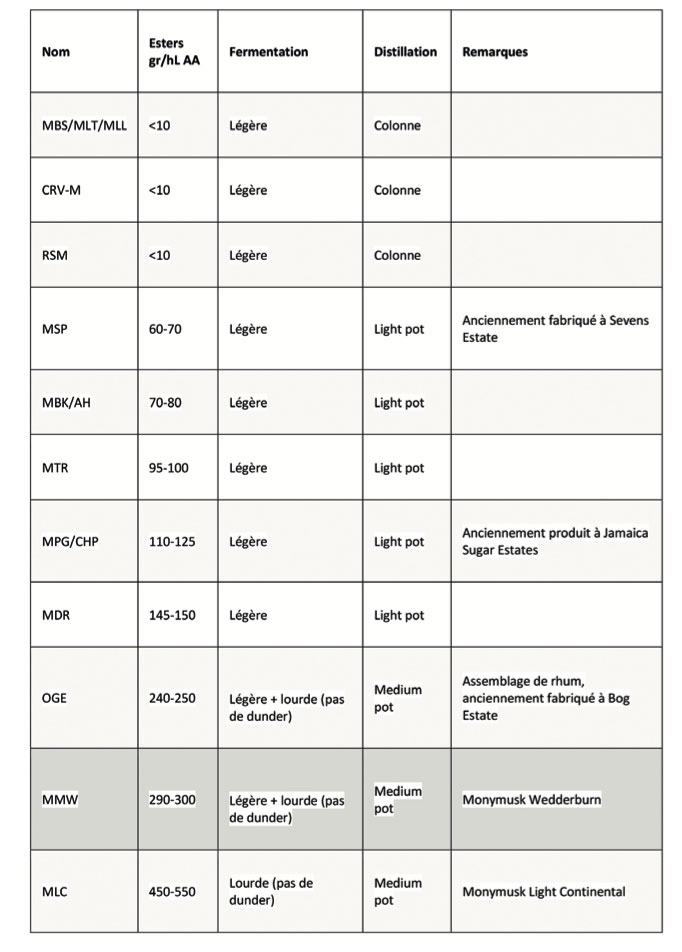National Rums of Jamaica (NRJ) rums are emerging from limbo to take their place as one of the most sought-after juices for rum lovers. After a long history of being used in blends (and still is, for Captain Morgan for example), Clarendon/Monymusk and Long Pond rums have been the subject of a host of bottlings, highlighting the incredible diversity of their ranges. And there are now even some official bottlings. Rumporter takes you on a journey into the inner workings of NRJ, so grab a glass of (Jamaican) rum and some paracetamol, because the journey can be a bit tricky!
No, NRJ is not just a radio station that broadcasts the latest hits. It is also, and above all for rum lovers, the parent company of two of Jamaica’s five distilleries. National Rums of Jamaica watches over the destinies of Long Pond and Clarendon (as well as its Monymusk brand).
For a long time, these legendary names remained in the shadows as they were blended by English traders and independent bottlers (and later by other nationalities), but they are now appearing more and more on the bottles of rums. And they are now even releasing their own vintages! To enter the complex world of NRJ, however, you need to be armed with a good dose of Doliprane, as its shareholding, the types of rums it produces, its history and the vintages it offers via third parties are so diverse.
From Long Pond to NRJ
Long Pond is located in the heart of the Trelawny region of northwest Jamaica. The estate has its origins in the early 18th century, when the Caribbean island was a British colony. The first known owner was Simon Clarke in 1760, but little is known about the history of Long Pond in the 19th century.
We can only imagine that the distillery produced a strong rum, which was then sent to London to be aged and blended with lighter rums. This resulted in dock rums and Navy rums. In 1921, the Scottish company Sheriff & Co bought Long Pond and acquired over the years several estates in the area, including Cambridge, Vale & Royal, Kinloss (names which can be found on some of its modern rums)…
In 1949, the Clarendon distillery, in the south of the country, was created. In 1953, the Canadians of Seagram became owners of Long Pond. Its rums were then used in the composition of their Captain Morgan blend, created in 1944. In 1955, it was Innswood’s turn (in the south-east) to come into operation.
In 1977, Long Pond, Clarendon and Innswood were nationalised by the State under the aegis of the National Rums of Jamaica (Jamaica gained independence in 1962), in an attempt to stem the never-ending crisis in the island’s sugar and rum industry. In 1993, however, the State was faced with heavy losses and decided to open up the capital of NRJ, which was partially privatised.
The new shareholders were the Jamaican government and the Sugar Cane Company, Demerara Distillers Limited (DDL, Guyana), and West Indies Rum Distillers (WIRD, Barbados), then owned by Goddard. Except that in 2017, the French of Maison Ferrand (Alexandre Gabriel/Plantation) bought WIRD from Goddard and thus became 33% shareholders in NRJ.
To complicate matters, Clarendon (but not Long Pond and Innswood) is only 73% owned by NRJ. The remaining 27% is owned by its largest customer, none other than the world’s largest spirits conglomerate, and current owner of the Captain Morgan brand: Diageo. Finally, at the time of writing, rumours were starting to emerge that the Jamaican government would like to sell all or part of its shares in NRJ. To be continued…
Long Pond, the kingdom of heavy rums
At Long Pond, production was temporarily suspended in 2012 for renovation work and resumed in July 2017. Sadly, a terrible fire broke out in 2018 and destroyed the venerable fermentation room (leaving the muck pit and distilling apparatus intact). In June 2022, Long Pond reopened (for good) in the presence of Alexandre Gabriel, Komal Samaroo, the chairman of NRJ and Jamaican Prime Minister Andrew Holness. Long Pond is located next to the Long Pond Sugar Factory.
Here’s how its rums are produced, which are particularly popular with discerning enthusiasts.
The molasses is fermented in 63 wooden casks under a roof in the open air. It is made with natural yeasts from the sugar cane fields surrounding the distillery. Long Pond carries out long fermentations (4 to 6 weeks) in order to favour the formation of esters. The vinasses that remain at the bottom of the still after the first distillation and natural yeasts are added during the fermentation to acidify the vats, favouring the formation of esters. They are also used in the composition of the “Muck pit”, a unique and secret pool of micro-organisms preserved since its origin. Its contents are added at the end of fermentation.
Five retort stills, 3 John Dore, and 2 Vendôme (from the former Monymusk distillery), four of which have a capacity of 125 hl and a smaller one of 53 hl, produce intense and atypical rums. The collectors of the various low wines and high wines used for blending are unique and varied and retain the flavours of a bygone era. Long Pond also has an old Blair column, which has not been operational since 2009.
The classification of the rums it produces depends on the concentration of esters formed mainly during fermentation according to an ancestral process that has made the reputation of this distillery. Long Pond produces 10 unique rums, including the legendary TECB (1400 g/hlap) and TECC (1600 g/hlap of esters).
Some of these references are the distant heritage of the distillery, which has taken over the formulas of the estates it bought during its history, such as the IRW/VRW coming from the now defunct Vale Royal estate, from which Long Pond has kept the rum formulation. Even if it is able to produce easily accessible rums, Long Pond is above all sought after for its very estery rums, on ripe banana.
Clarendon, a distillery with two faces
The Clarendon distillery, situated in the south of Jamaica, is much more recent than its cousin Long Pond, since it was built in 1949. This distillery is actually separated in two parts. An old part which hosts stills, and which produces heavy rums, up to high esters, and a modern part which hosts huge distillation columns and which produces light rums, especially for Diageo. It is adjacent to the Monymusk Sugar Factory.
The fermentation of the molasses for the distillation in alembics, in particular for the famous MLC rum (500 g/hlap to 1000 g/hlap of esters) is still done in 12 wooden casks with natural yeast coming from the sugar cane fields surrounding the distillery. In addition, there are 24 fermentation tanks for the distillation of lighter pot rums (MBK quality). 4 other fermentation tanks are also used for column distillation. The almost complete darkness of the place accentuates the mystery of the always magical process of fermentation, which is practiced here in a spontaneous way for the rums distilled in alembic.
The natural yeasts used allow us to obtain, within a period of 14 to 30 days (2 weeks in the wood and 2 weeks in the vat), a very rich rum.
The distillation is carried out in two copper pot stills with double retort: an old Vendôme with a 200 hl capacity which was completely rehabilitated in September 1999 and a more recent one (2009) of 250 hl.
The alcohol content at the outlet is 86%. This process is used to produce Clarendon’s high esters such as MLC with an ester content of between 500 and 1000 g/hlap. Two of the oldest stills (80 years old) of the Clarendon distillery have been transferred to Long Pond in 2002.
For the light rums, the fermentation is relatively short (24 hours) in open metal tanks. They are run through a huge, modern, automated triple distillation column, installed in 2008, which produces light rum with a strength of 94-96%. This triple column allows Clarendon to produce 10 million litres of pure alcohol per year! 90% of this production is captured by Diageo.
Innswood, the ghost distillery
At the beginning of the 20th century, there were 150 distilleries in Jamaica, but nowadays only 5 are still active: Appleton/Wray & Nepew, Long Pond, Clarendon, Hampden and Worthy Park. Innswood (South-East) is one of those distilleries which were finally silenced by the different crises which hit Jamaican rum over the years.
It started its activity in 1959, stopped producing in 1992 and was definitively closed by the NRJ in 1996. According to Matt Pietrek, it produced light rum, notably for Gordon’s gin. Today it houses offices, a cooperage, blending tanks and ageing cellars, which are used for Clarendon’s Monymusk brand.
The NRJ ranges
With Innswood no longer in business, rum lovers will have to turn to Clarendon and Long Pond to quench their thirst for the NRJ range. But here again, nothing is simple. For centuries, Jamaican heavy rums were used in blends and therefore sold in bulk. They were mixed with lighter rums to give them flavour.
A bit like single malt whiskies are used in blended whiskies. In fact, Long Pond and Clarendon have only recently started bottling their own juices. To further complicate the task of navigating the world of NRJ, Clarendon usually (but not always) markets its rums under the Monymusk brand!
The best way to taste rums produced by NRJ is still to turn to the host of vintages released by independent bottlers: LMDW/Velier, Rest & Be Thankful, la Compagnie des Indes, Swell de Spirits, Wild Parrot, Bristol, Famille Ricci, Rum Runner…
In total, Benoist Saillour, the rum man at the LMDW shop in Odéon (Paris VIe), has counted no less than 64 independent bottlings of Clarendon/Monymusk and Long Pond rums. This does not include the vintages marketed by Plantation, which, as a shareholder of NRJ and therefore a producer, does not fall into the independent bottler category. Not to mention the few “official” vintages, notably those distributed in France by DIVA Domaines & Distilleries.
Rums for a start in the world of NRJ
Jamaican rums are much more diverse than they seem. It is common to say that the northern rums (Hampden, Long Pond) are heavy, the central rums (Appleton, Worthy Park) are balanced, and the rums from the southern distilleries (Clarendon, New Yarmouth) are light. But it is of course much more complicated, as Clarendon for instance is able to make heavy rums and even high esters, while Long Pond can make light rums very well.
Still, to start with NRJ rums, it is better to look for Clarendon/Monymusk rums or blends from different distilleries. For example, the Monymusk Classic Gold or its slightly older version the Special Reserve (both 40%). Another alternative is Plantation’s Xaymaca Special Dry (43%), which blends rums from Clarendon and Long Pond. Or the Rest & Be Thankful 2012 Monymusk MDR (46%). These are all very good rums, complex, relatively unsterilised and affordable in terms of price (less than 70 euros), degree and flavour.
To go further, and start with a pure product of the Long Pond distillery, you can opt for the Long Pond 2019 from Habitation Velier. This is a much more powerful rum, marked by ageing and a high degree (60%), but still balanced (79 euros). To go even further, the Plantation and Rest & be Thankful ranges will allow you to adapt as the esters, years and degrees increase.
The problem is the price, as these are often single casks that can go from over 100 euros to 600 euros and more. The most extreme rum that we tasted for this dossier is the ultra-powerful (degrees, wood, esters!) Jamaica 1995 from Plantation in single cask (69%)!
The Marks
For centuries, Jamaican rums have been used as flavour enhancers in the blending rums of English merchants. To facilitate their use, they were classified according to their ester content, which are non-alcoholic molecules that can impart very powerful flavours to spirits. Esters are formed during fermentation, and the particularly long fermentation process used in Jamaica (but not all the time) encourages their appearance.
Rums that are particularly high in esters are called high esters and are the equivalent of our great flavours. Jamaican rums are therefore classified from the least powerful to the most aromatic. Each level of classification is called a Mark.
Fortunately, you don’t necessarily need to be an expert in Marks to find your way around, as many independent bottlers (Velier, Plantation, Rest & Be Thankful) are doing a salutary job of making their bottles transparent and indicating the ester content.
Here are the Marks of Long Pond and Clarendon, kindly collected by Benoist Saillour (LMDW)
Long Pond
Clarendon
Clarendon and Captain Morgan
In 2001, Seagram’s drinks business was taken over by Pernod-Ricard and Diageo. Captain Morgan then became the property of the latter. Today, the version of Captain Morgan sold in Europe contains rum from Clarendon (and no longer from Long Pond), in which Diageo has a 27% stake (but not from Long Pond and Innswood).
The other versions come from the St. Croix distillery in the Virgin Islands (USA). And to complicate things further, the Captain Morgan brand is not owned by Diageo for the Jamaican market, where it is produced by J. Wray & Nephew Limited, which produces Appleton, now owned by Campari.

